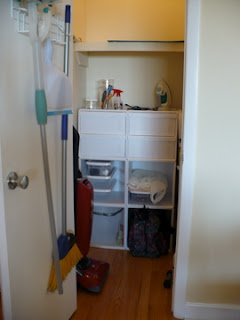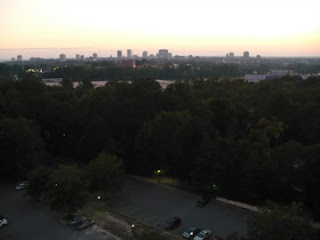When I completed my TAST sampler somewhere around December 28th of 2007, I decided to make a "map" of the panels and create a list of the stitches as a "key" so that each stitch variation would be identifiable at a later date. Good thing, too, because in reviewing the sampler, there were several stitches that really didn't ring a bell, so to speak. Here's the map. It folds out from the last page of the second notebook.
And here's the list of stitches as assigned each week. I also gave each stitch a "grade" from 5 plusses (really enjoyed working the panel) to 1 plus (never again), in case I ever wanted to select a stitch for use in another project. The key is in the notebook glued to the page preceding the map.
I tried phot0graphing a few areas of the sampler to give you an idea of what some of the individual panels looked like. I tried some closer shots but they were blurry and I just didn't have the patience at 7 AM in the dark to try to fiddle around with the camera (dawn breaks here now at 8 AM or so, but we go to standard time next week so that will change soon enough). The panels on the left were mostly done at the end of the challenge; the panels to the right were done early on.
As the challenge progressed, I got a bit freer with some of my variations. I especially liked working the "Christmas tree". The three white blobs are white buttons that were attached using the shisha stitch (I wanted to keep the work completely a black/white affair.)
And here's my TAST SOS. After I had worked the running stitch, I noticed that I had long and short stitches arranged like dots and dashes. I checked a morse code list and I had stitched T, A, and S. I was absolutely floored by the serendipity. So, I stitched TAST next to the panel just for jollies. Sometimes, things work out in unexpected ways which make a person marvel at the Universe.
Now that I have completed this posting, I am thinking that I will photograph each panel and put it into the notebook so that I have a record in the journal in case it gets separated from the actual sampler. After, I have others' work pasted into the journal - why not my own? But I will have to figure out how to get good close-ups. I may go to my non-digital camera. I am just not that enamored of digital technology and my camera is definitely not high-end and do-it-all, so it may be a while before I get that task done. And if I somehow get the panels photographed and inserted into into the journal before the end of the year when the current challenge ends, I promise to post the results.



























